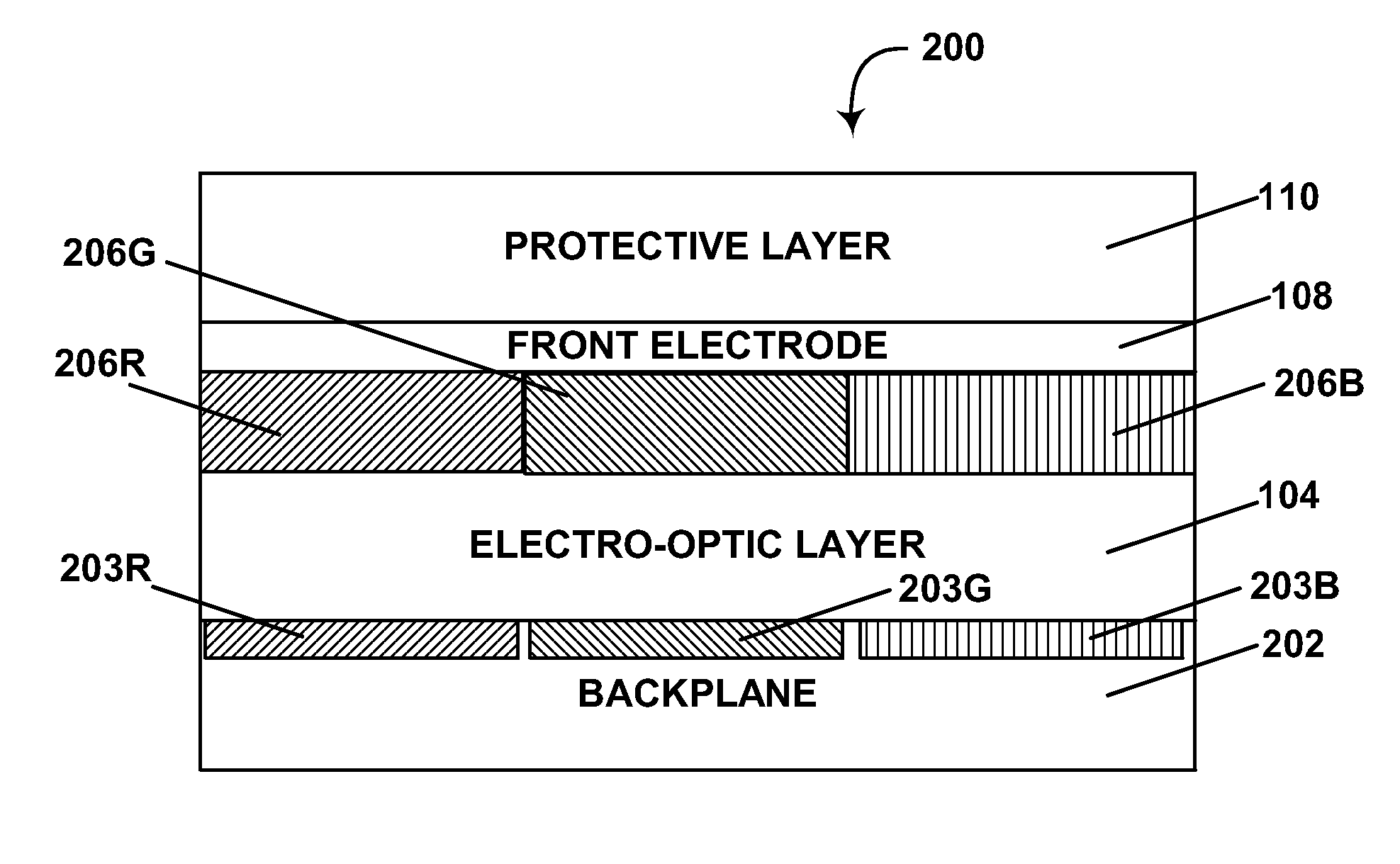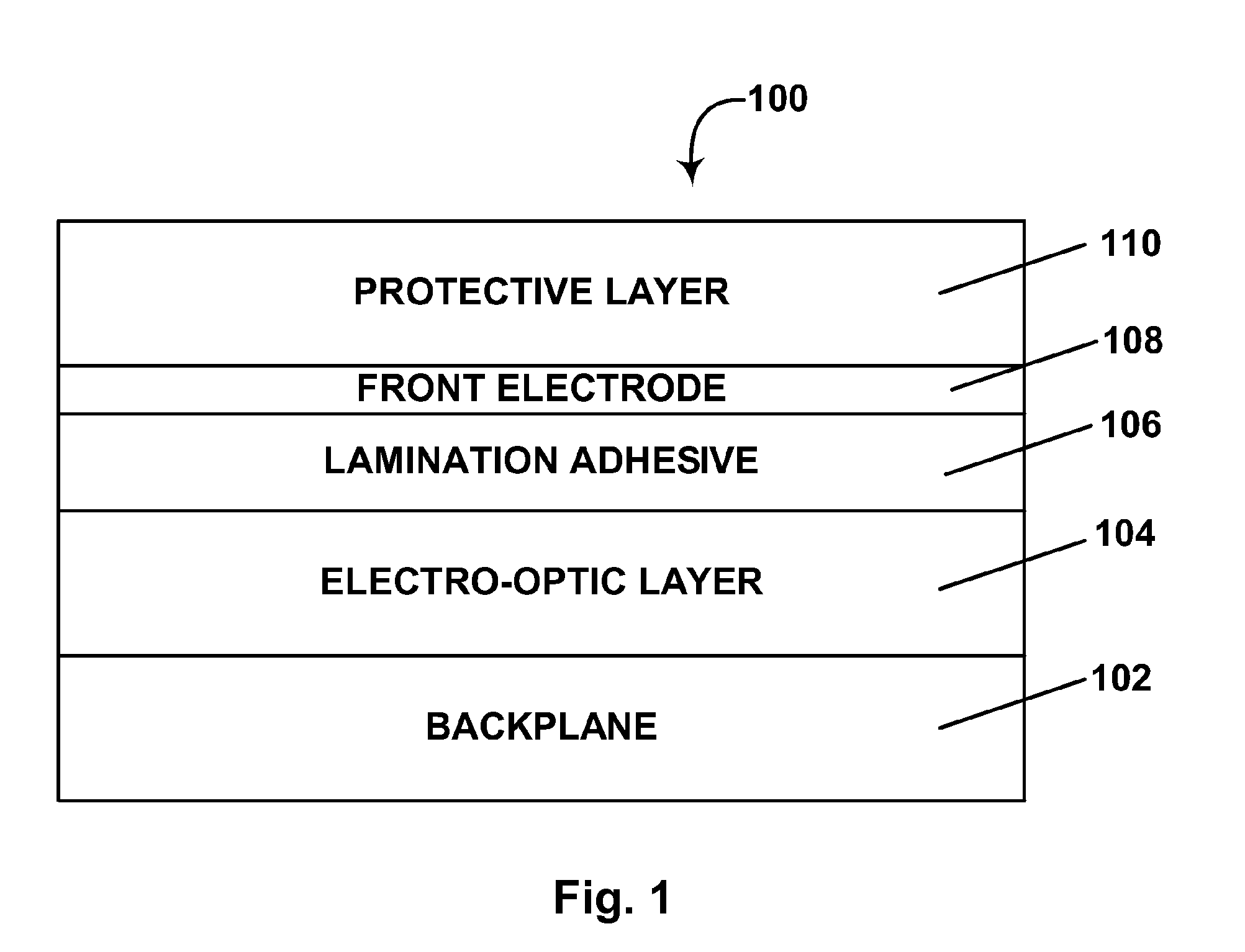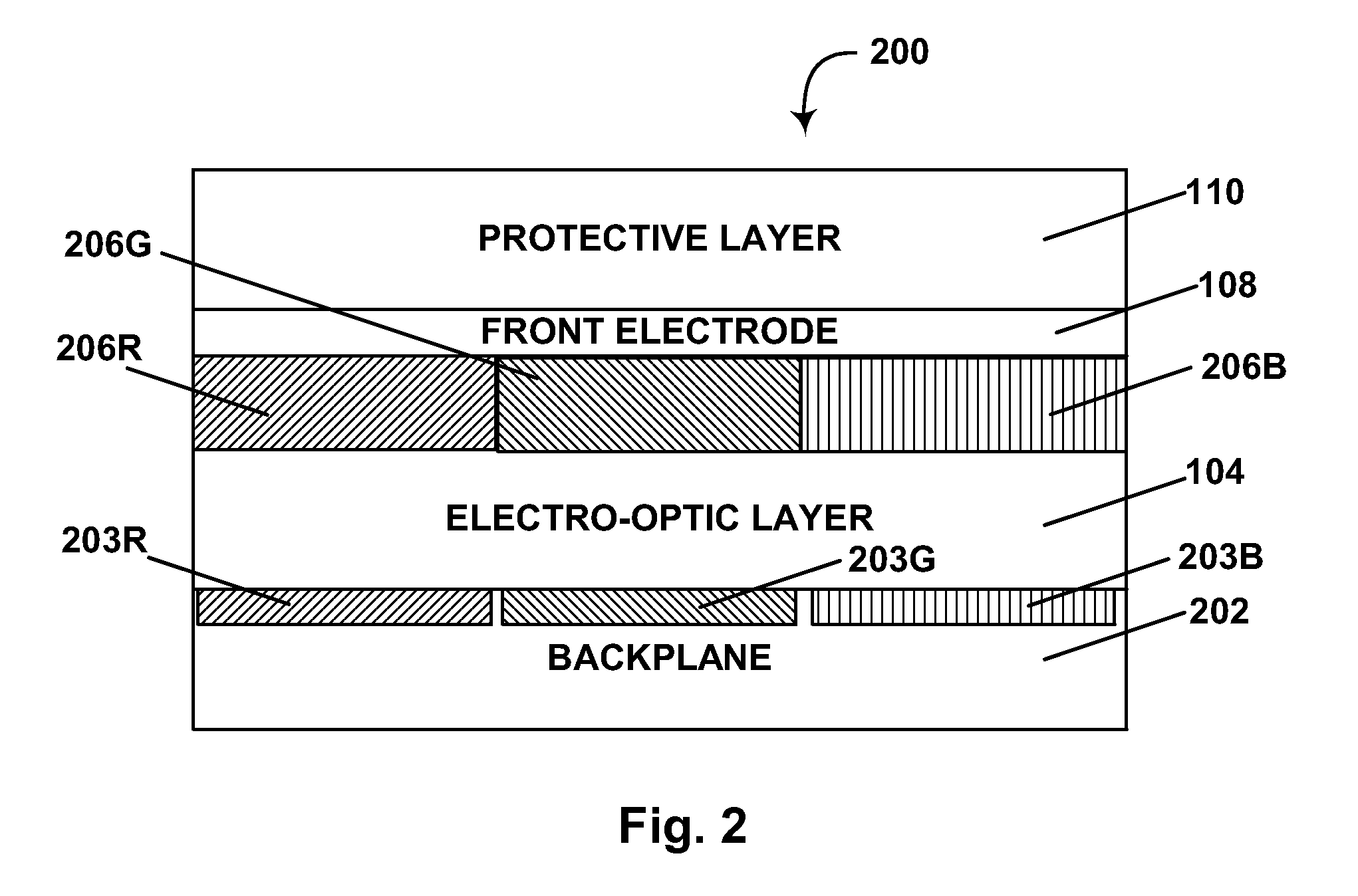Components and methods for use in electro-optic displays
a technology of electrooptic displays and components, applied in optics, instruments, static indicating devices, etc., can solve the problems of inadequate service life of these displays, gas-based electrophoretic media is susceptible to the same types of problems, and the use of these displays is prevented. to achieve the effect of convenient and flexible color filter arrays
- Summary
- Abstract
- Description
- Claims
- Application Information
AI Technical Summary
Benefits of technology
Problems solved by technology
Method used
Image
Examples
example 1
Production of Experimental Displays
[0089] A slurry containing electrophoretic capsules in a polymeric binder was prepared substantially as described in U.S. Pat. Publication No. 2002 / 0180687, Paragraphs [0067] to [0074], except that Dow Corning Q2-521 “Super Wetting Agent” was added as a coating aid. The slurry was then bar-coated on to the aluminum-coated surface of an aluminized PET release sheet. In one procedure, a 20 μm layer of a lamination adhesive had previously been coated on to the same aluminized surface; this lamination adhesive was of the type described in U.S. Pat. No. 7,012,735, and was doped with 20,000 ppm of tetrabutylammonium hexafluorophosphate. In a second procedure, the same 20 μm layer of the same lamination adhesive was laminated to the ITO-covered surface of a PET / ITO release sheet, and the resultant sub-assembly laminated to the electrophoretic layer / release sheet subassembly, the adhesive layer being laminated to the electrophoretic layer.
[0090] The lam...
example 2
[0097] Electro-optic Tests
[0098] The experimental displays prepared in Example 1 above were driven between their extreme black and white optical states using ±15 V, 500 millisecond drive pulses and the reflectivities of the two extreme optical states measured. Testing was effected both at room temperature (20° C.) and at 0° C. FIG. 4 of the accompanying drawings shows the dynamic range (the difference between the extreme black and white states measured in L* units (where L* has the usual CIE definition:
L*=116(R / R0)1 / 3−16,
where R is the reflectance and R0 is a standard reflectance value). In each case, the left column shows the results obtained at 20° C., while the right column shows the results obtained at 0°C.
[0099] From FIG. 4 it will be seen that the control and the “inverted” structure of the present invention (the two pairs of columns at the left-hand side of FIG. 4, the inverted layer being inverted in the sense that the electrophoretic layer is inverted) show very simila...
example 3
Resolution
[0101] The resolution of the control displays and those of the present invention was evaluated by microscopic examination of the displays formed on glass backplanes; FIG. 5 shows the differences that were observed. As indicated in FIG. 5, each of the displays used in these tests comprised two pixels separated by a 100 μm gap having no ITO layer and hence non-switching. The control display (conventional FPL structure) is shown on the left-hand side of FIG. 5 and the display of the present invention on the right-hand side. Each side of FIG. 5 is a composite of three separate micrographs of the relevant display. The upper section of FIG. 5 shows the display with the right pixel switched to its white extreme optical state, while the lower section of FIG. 5 shows the display with the right pixel switched to its black extreme optical state.
[0102] It can be seen from FIG. 5 that, in the control display, blooming caused switching across the entire width of the inter-pixel gap, ...
PUM
| Property | Measurement | Unit |
|---|---|---|
| Thickness | aaaaa | aaaaa |
| Particle size | aaaaa | aaaaa |
| Thickness | aaaaa | aaaaa |
Abstract
Description
Claims
Application Information
 Login to View More
Login to View More - R&D
- Intellectual Property
- Life Sciences
- Materials
- Tech Scout
- Unparalleled Data Quality
- Higher Quality Content
- 60% Fewer Hallucinations
Browse by: Latest US Patents, China's latest patents, Technical Efficacy Thesaurus, Application Domain, Technology Topic, Popular Technical Reports.
© 2025 PatSnap. All rights reserved.Legal|Privacy policy|Modern Slavery Act Transparency Statement|Sitemap|About US| Contact US: help@patsnap.com



